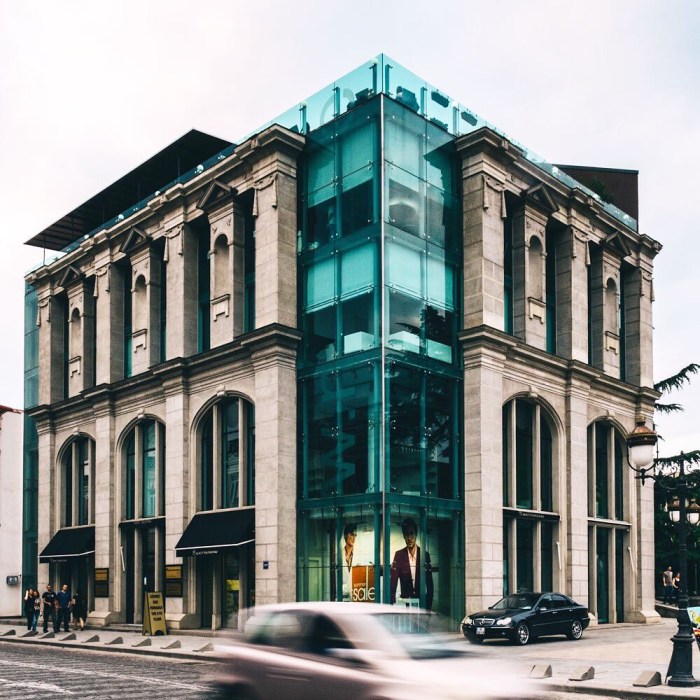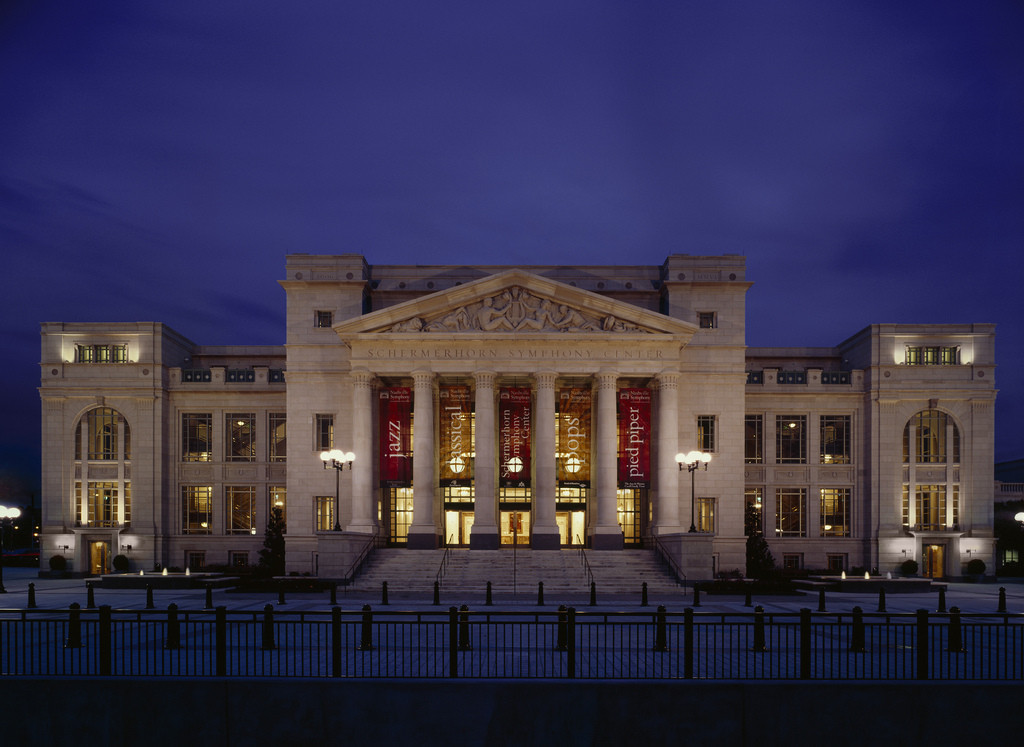
Embark on a journey through the captivating world of Modern Classic Architecture, where tradition meets innovation in a harmonious blend that defines architectural excellence.
Discover the essence of modern classic designs that transcend time and inspire awe with their timeless beauty and functionality.
Introduction to Modern Classic Architecture
Modern classic architecture is a style that combines traditional design elements with contemporary influences, creating a timeless aesthetic. Key characteristics include symmetrical facades, classical proportions, and the use of high-quality materials like stone, marble, and wood.This architectural style emerged in the late 19th and early 20th centuries as a response to the industrial revolution and the rise of modernism. Architects sought to preserve the elegance and beauty of classical architecture while incorporating modern technologies and materials.Examples of famous modern classic architectural designs around the world include the Chrysler Building in New York City, the Petronas Towers in Kuala Lumpur, and the Sydney Opera House in Australia.
These iconic structures showcase the harmonious blend of traditional and modern elements that define modern classic architecture.
Elements of Modern Classic Architecture
Modern classic architecture is characterized by a blending of traditional design elements with contemporary materials and technologies. This style aims to create timeless, elegant buildings that pay homage to the past while embracing the future.
Key Elements of Modern Classic Architecture
- Symmetry: Modern classic buildings often feature symmetrical facades and layouts, reflecting the balanced proportions found in classical architecture.
- Columns and Pilasters: Elements such as columns and pilasters are commonly used in modern classic designs to evoke a sense of grandeur and sophistication.
- Architectural Details: Intricate details like moldings, cornices, and pediments add depth and visual interest to modern classic buildings.
- Flat Roofs: While traditional architecture often features pitched roofs, modern classic buildings typically have flat or slightly sloped roofs for a more contemporary look.
Influence of Traditional Styles
Traditional architectural styles, such as Greek, Roman, and Renaissance, heavily influence modern classic designs. Elements like Doric and Corinthian columns, arches, and pediments are reinterpreted in a contemporary context to create a sense of timelessness and elegance.
Use of Materials in Modern Classic Architecture
Modern classic architects often utilize a combination of traditional and modern materials to achieve their desired aesthetic. Concrete is commonly used for its versatility and durability, while glass allows for light-filled spaces and seamless indoor-outdoor connections. Steel is employed for its strength and ability to create open, column-free spaces in modern classic buildings.
Modern Classic Architectural Styles

Modern classic architecture stands out by blending traditional design elements with contemporary features, creating a timeless and elegant aesthetic. Let’s delve deeper into how modern classic architecture compares to other styles, how it incorporates old and new elements, and the importance of symmetry and balance in its designs.
Comparison with Contemporary and Postmodern Architecture
In contrast to contemporary architecture, which focuses on innovative and cutting-edge designs, modern classic architecture pays homage to traditional styles while incorporating modern materials and technologies. On the other hand, postmodern architecture embraces eclecticism and often mixes different styles and elements in a playful manner. Modern classic architecture maintains a sense of familiarity and timelessness while still adapting to modern needs.
Blending Old and New Design Elements
Modern classic architecture seamlessly combines classical features such as columns, arches, and symmetry with contemporary elements like large windows, open floor plans, and minimalist aesthetics. This fusion creates a harmonious balance between the past and the present, offering a sense of elegance and sophistication while meeting the functional requirements of today’s lifestyle.
Importance of Symmetry and Balance
Symmetry plays a crucial role in modern classic architectural designs, creating a sense of order, harmony, and visual appeal. Balanced proportions and carefully curated details contribute to the overall beauty and cohesiveness of a building. By incorporating symmetry and balance, modern classic architecture exudes a sense of grace and timelessness that resonates with admirers of both traditional and contemporary styles.
MINIMALIST DESIGN

Minimalist design is a style characterized by simplicity, clean lines, and a focus on functionality. The principles of minimalist design include using only essential elements, eliminating unnecessary ornamentation, and emphasizing the beauty of simple forms and materials.Minimalist design has a significant influence on modern classic architecture, as it aligns with the emphasis on clean lines and timeless elegance. This design approach allows architectural elements to stand out on their own, creating a sense of harmony and balance within a space.
Examples of Minimalist Design Elements in Modern Classic Architectural Projects
- Use of neutral color palettes such as whites, grays, and blacks to create a sense of calm and sophistication.
- Clean and uncluttered spaces that prioritize function over decoration, allowing architectural elements to shine.
- Minimal use of ornamentation, with a focus on highlighting the natural beauty of materials such as wood, stone, and glass.
- Simple geometric shapes and forms that contribute to a sense of order and balance in the overall design.
- Integration of natural light through large windows and open floor plans, adding an airy and spacious feel to the space.
MODERN CLASSICS
Modern classics in architecture and design refer to timeless pieces that combine elements of both contemporary styles and traditional aesthetics. These architectural works are characterized by their ability to stand the test of time, remaining relevant and admired for years to come.
Timeless Appeal
Modern classic architecture stands the test of time by blending innovative design concepts with classic elements that have proven their longevity. By incorporating both modern technology and traditional craftsmanship, these architectural pieces are able to transcend trends and remain iconic for generations.
Role of Innovation and Creativity
Innovation and creativity play a crucial role in creating modern classic architectural masterpieces. Architects and designers must push the boundaries of traditional design while still respecting and drawing inspiration from the past. By infusing new ideas and approaches, they are able to create buildings that are not only visually stunning but also functional and enduring.
MODERN LIVING
Modern classic architecture plays a crucial role in enhancing modern living spaces by combining timeless design elements with modern amenities. This fusion creates a harmonious environment that caters to the needs and tastes of contemporary lifestyles.
Integration of Technology and Sustainability
Modern classic architectural designs seamlessly integrate technology and sustainability to meet the demands of modern living. Smart home features, energy-efficient materials, and eco-friendly practices are often incorporated into these designs to enhance the overall living experience.
Relationship with Contemporary Lifestyles
The relationship between modern classic architecture and contemporary lifestyles is evident in the emphasis on open floor plans, natural light, and flexible living spaces. These design principles prioritize comfort, functionality, and aesthetics, catering to the preferences of individuals leading modern lifestyles.
As we conclude our exploration of Modern Classic Architecture, we are reminded of the enduring allure and significance of blending classical elements with contemporary vision to create architectural masterpieces that stand the test of time.
FAQ Compilation
What defines Modern Classic Architecture?
Modern Classic Architecture combines traditional architectural elements with contemporary design principles to create timeless structures that exude elegance and sophistication.
How does Modern Classic Architecture differ from other architectural styles?
Unlike contemporary or postmodern styles, Modern Classic Architecture seamlessly integrates classical elements with modern innovations, striking a perfect balance between old and new.
What role does innovation play in Modern Classic Architecture?
Innovation is key in creating modern classic architectural masterpieces, as it allows for the fusion of traditional aesthetics with cutting-edge technologies to redefine architectural boundaries.
How does Modern Classic Architecture enhance modern living spaces?
Modern Classic Architecture enhances modern living spaces by combining timeless design elements with contemporary comforts and amenities, creating spaces that are both functional and aesthetically pleasing.





